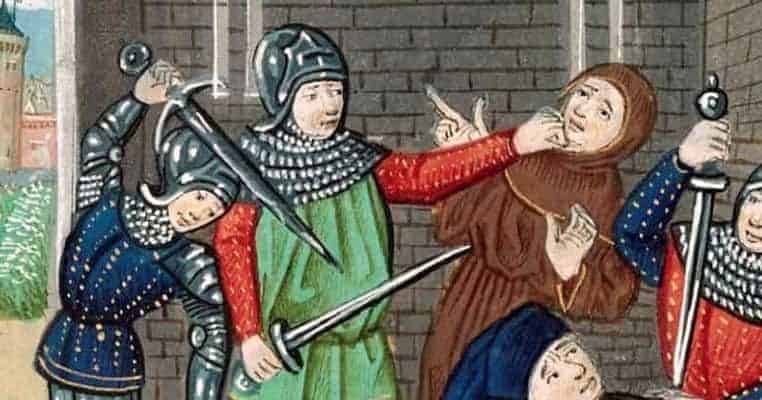We all know about the Peasants’ Revolt of 1381, right? No? Well, this is the story of a country divided between rich and poor, in which the latter en masse finally got sick of being poor and oppressed. A shabby troop of illiterate farmhands, pitchforks and burning stakes in hand, who descended on London, indiscriminately killing anyone who looked like they owned property or had ever sneered at an indolent peasant, burning and looting everything in their wake. A disorganized revolt ended immediately after the death of the peasant-leader, Wat Tyler, in front of the boy-king, Richard II. It all seems so simple, doesn’t it?
But whilst there is some truth in the stereotypical narrative, the reality was far more complex, and infinitely more interesting. For this was not a random uprising, nor was it without intelligent tactics and smart leadership. Nor was it simply a phenomenon confined to the capital city, but took in much of the country. And it certainly didn’t end immediately upon the death of Wat Tyler. The notorious event is steeped in myth and misunderstanding, and here we will look at the truth behind the bloodshed and disorder in that fateful summer of 1381. Let’s start with the name itself.

Peasants’ Revolt?
The popular term for the events of 1381 is terribly misleading. It is because of this name that one of the greatest myths about the revolt exists: that it was simply an uprising of ale-drenched oafs brandishing rusty agricultural implements. Nothing could be further from the truth: the revolt was neither an exclusively rural phenomenon, nor a rebellion of just peasants. For the ripples of discontent passed through the inhabitants of the great towns and cities of 14th-century England, and the mob itself included members of the aristocracy and knightly class. Historians thus prefer to call it ‘The Great Revolt’.
It was not just peasants who were furious about the social and economic conditions in 1381. The eastern county of Norfolk is a case in point. Actively participating in the rebellion there was one Sir Roger Bacon, a knight from the manor of Baconsthorpe. As well as generally participating in the orgy of violence, he even took command of a battalion of rebels, and led them on a brutal assault against the city of Norwich. Another member of the knightly class involved was Thomas Gyssing, son of Sir Thomas, who had served as MP for Norfolk in 1380.
Although plenty of peasants were involved in the Great Revolt, they found many allies in the cities. In London, for example, the complicity and participation of the urban population was crucial to the uprising’s success. In the early stages of the rebellion, when small protests were taking place in Essex and Kent, two London Butchers, Adam Attewell and Roger Harry, rode out to the counties to inform the rebels that they could count on support from the capital if they came to London. When they did come, Londoners were crucial in leading the way to important targets and providing intelligence.
Though closer economically to peasants than aristocrats, professionals such as Attewell and Harry were most certainly not serfs legally tied to a lord’s estate. These men, whilst hardly wealthy, had a much greater degree of economic and political freedom than the peasants. Yet whilst they would have taken being called ‘peasants’ as an insult, they were as much involved in the revolt as their poorer allies. As we will see over the coming items on the list, it is absolutely vital that images of the bumbling peasant-gang be purged from our minds when thinking of The Great Revolt of 1381.

